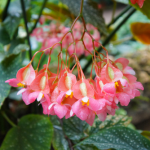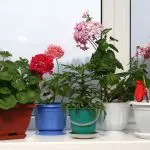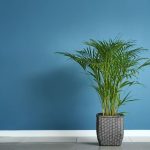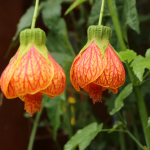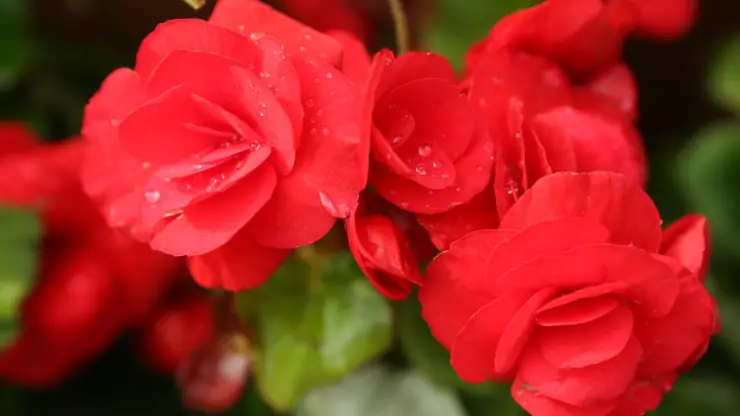
Rieger begonias, also known as Begonia x hiemalis or winter-blooming begonias, are typically discarded after a single season of flowering. But they are perennials, and it’s possible to keep them going for years by propagating or giving them a rest period after blooming.
You can typically find rieger begonia for sale in mid winter, just as they’re on the brink of flowering. Mature plants in full flower reach 12 – 18 inches (30 – 45 cm) in height, and feature numerous delicate blossoms in shades of red, pink, salmon, orange and yellow.
If you want colorful flowers in winter, this is the plant for you. Place it on a sunny windowsill and let it brighten the shorter days. In this post, I’ll cover all aspects of how to care for rieger begonia indoors, including how to prolong flowering and keep this plant thriving as long as possible.
How to Care for Rieger Begonia Indoors
Rieger begonia is not difficult to grow as a houseplant, but it does need bright light and moderate humidity. If you can get the conditions just right, you can enjoy beautiful flowers for months before they begin to fade. This is one of the easiest flowering indoor plants you can grow. Here’s a brief run-down of care guidelines:
- WATER: Allow soil to dry within 1 inch (2.5 cm) of the surface
- HUMIDITY: Moderate
- FEEDING: Once every 3 weeks during active growth with high-phosphorus fertilizer
- LIGHT: Medium bright
- TEMPERATURE: 60 – 75 degrees F (16 – 24 degrees C)
- SAFETY: Toxic to dogs, cats, and humans
- DIFFICULTY: Moderately Easy
Keep reading for more in-depth information on how to care for rieger begonia indoors – including propagation instructions, maintenance, and troubleshooting.
Watering
Allow the soil to dry within 1 inch (2.5 cm) of the surface between waterings. Test soil moisture by inserting your finger into the soil up to the first knuckle. If the soil feels dry, water thoroughly. If the soil still feels moist, check again the next day.
Avoid getting water on the foliage, as this can promote fungal diseases. Use a watering can with a narrow spout to pour water directly onto the soil.
Humidity
Rieger begonia needs moderate humidity levels. Keep the plant on a tray filled with pebbles and water (also known as a homemade humidity tray) to increase moisture in the air. Do not mist this plant because water on the foliage promotes fungal disease. Instead, use a humidity tray or place a high-quality humidifier in the room.
Fertilizer
Feed your rieger begonia plants once every three weeks using a high-phosphorus houseplant fertilizer diluted to half strength. High-phosphorus means the second number is higher than the other two, such as 10-30-20.
My favorite fertilizer for indoor flowering plants is Jack’s Blossom Booster but any houseplant fertilizer with higher phosphorus levels should be fine. High-phosphorus fertilizer promotes flower production and results in more brightly colored blooms.
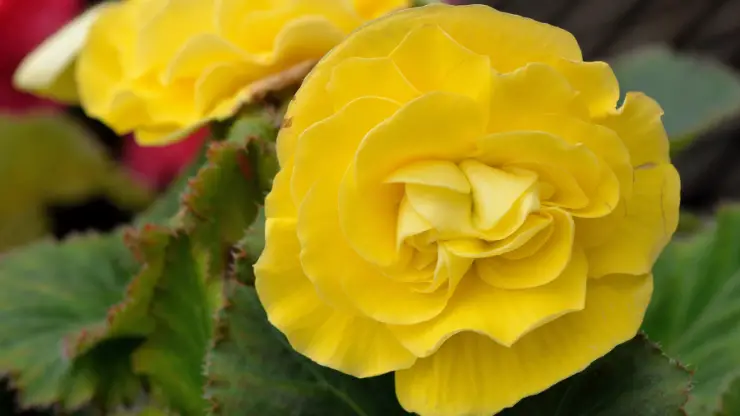
Rieger Begonia Light Requirements
Rieger begonia requires medium light and does best with a half-day of filtered sunlight. For the best results, place in a bright, cool location such as an east-facing window with the light filtered by sheer curtains.
Because rieger begonias are short-day (long-night) plants that bloom in winter, avoid placing them in locations that receive supplemental light during the night (such as streetlights or artificial indoor lights). The extra light can stop them from flowering because they won’t get the long periods of darkness they need.
Temperature
The best temperature for growing rieger begonia is around 60 – 75 degrees F (16 – 24 degrees C) year-round. At night, it prefers lower temperatures of around 60 degrees F (16 degrees C), while during the day it prefers warmer temperatures of around 70 – 75 degrees F (24 – 24 degrees C).
Never let temperatures drop below 55 degrees F (12 degrees C) for long periods, as this may cause irreversible damage to the plant.
Potting
The best potting soil for rieger begonia is a fast-draining mix that includes peat and perlite – such as an African violet mix. I use this mix by Black Gold for my indoor begonias with great success, but any good potting mix formulated for indoor flowering plants or African violets should work fine.
If your plant becomes root-bound, shift to a slightly larger container as needed. If you grow rieger begonia as a perennial houseplant, it may need to re-potting once it begins growing again after the resting period. Choose a container with a diameter 2 inches larger than the current one.
Rieger Begonia Propagation
To keep your rieger begonia going for another year, you can propagate it and start a new plant (or see the next section for growing as a perennial). Here’s what to do:
- When flowering is done (usually in late spring or early summer), taper off watering and allow the soil to become nearly dry.
- Cut foliage back to 3 inches (7.5 cm) and allow plants to rest for six weeks in a cool location. Then, commence watering as usual.
- Wait for new stems to grow and once they reach 3 inches (7.5 cm) tall, cut them off and root them.
- Discard the parent plant.
To root a cutting, remove leaves from the lower one-third of the stem. Dip cut end into a rooting hormone powder, and tap to remove excess. Insert the bottom one-third of the stem into moist seed starting mix. Cover with plastic and place in indirect light. Keep the potting mix moist, and transplant into regular potting soil after 4 – 6 weeks.
How to Keep Rieger Begonia Blooming
If you don’t want to propagate your rieger begonia every year and start a new plant, it’s possible to grow as a perennial and keep the same plant blooming for years. Here’s what to do:
- When blooming is done in late spring or early summer, cut stems back to 3 inches (7.5 cm) above the soil.
- Move the plant to a cool location outdoors in the shade for six weeks in summer. Keep soil on the dry side.
- When you notice new active growth, move the plant indoors to a location that receives bright, indirect light (such as an east- or west-facing window hung with gauzy curtains).
- Resume watering and fertilizing as normal. The short days and cool nights of fall and winter will promote blooming again.
- Repeat this process the next year, for as long as you want to keep the plant.

Troubleshooting
Here are some common issues indoor gardeners often run into when learning how to care for rieger begonia indoors (plus how to fix them).
- Flowers Turning Brown – If you notice your rieger begonia flowers turning brown, this is most likely part of the plant’s normal life cycle. Although it produces blooms for up to six months, individual flowers may only last a few weeks. (Snip off spent flowers to promote new blooms.) If flowers are turning brown too soon, this could be due to improper care. Make sure to carefully follow all the care instructions on this page to keep your plant happy.
- Leaves Turning Brown – This plant has a dormant period when its leaves turn brown in preparation for a long rest. If your rieger begonia leaves are turning brown, it’s most likely normal. If browning occurs outside the dormant period, this may be due to low humidity or under-watering. Water when the top 1 inch of soil dries out, and raise humidity by placing the plant on a humidity tray or placing it near a humidifier.
Related Questions
Here are some commonly asked questions related to rieger begonia care that you might find helpful (and my answers to them).
Can Rieger Begonias Be Grown Indoors? Yes, rieger begonias can be grown indoors as perennial houseplants that blooms in winter. Of course, you can always discard them after the first season, or start new plants from stem cuttings instead. But if you give the plant a resting period in summer, it will be ready to bloom again in late fall/early winter of the next year.
How Much Sun Does a Rieger Begonia Need? Reiger begonia needs medium light, such as that from an east-facing window with the light filtered by sheer curtains. It performs best when given half a day of filtered sunlight. Avoid extra light at night, as this can disrupt flowering.
How Long Do Rieger Begonias Live? As an annual flower, rieger begonias live just six months. However, they can be grown indoors as perennial houseplants indefinitely. Give them a rest period after flowering is done by moving to a cool, shady location and allowing the soil to dry out. Then, move them back to bright, filtered light after six weeks and resume regular care. They will bloom again year after year. They may also be kept going indefinitely by propagating from stem cuttings.
Where to Buy Rieger Begonia
Rieger begonia can often be found for sale in late fall or early winter, just before it starts blooming. This plant is a popular winter-blooming begonia, and you can likely find it at local nurseries or big box stores that have garden centers (like Walmart or Lowe’s).
If you want to buy a rieger begonia in a different season, or you can’t find one locally in fall or winter, I recommend checking the listings on Etsy. I always buy my hard-to-find houseplants on Etsy because I like buying from small growers. I’m supporting small business and getting a much better product too! (Plus, you can find different varieties that you might not find locally.)
Click here to check the current Etsy listing for rieger begonias any time of year. Good luck and happy growing!

